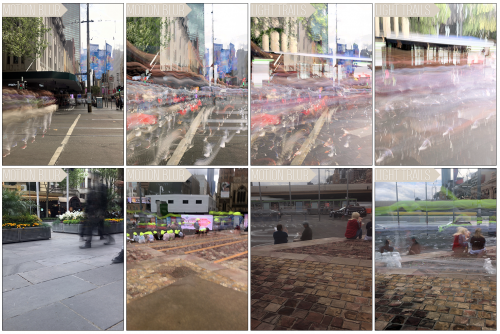
THEME
Play/Stillness
CONTEXT
Long exposure photography has been used since the beginning of photography, so we can find works such as Boulevard du Temple by Louis Daguerre in 1839, who introduced the people to be captured in the photographs. http://100photos.time.com/photos/louis-daguerre-boulevard-du-temple
And it is still widely used by artists such as:
Francesco Libassi, an Italian that as begun focusing on long-exposure landscape and architecture in black and white, mostly with natural landscapes or buildings.
https://www.offset.com/photos/long-exposure-of-isosaki-shrine-torii-gate-at-sea-596392
Yunus Malik, who also capture nature scenarios and architecture
“I’ve noticed long exposures becoming a trend in fine art and black and white images.”
https://www.instagram.com/p/Bst5qwehDcm/
https://www.instagram.com/p/Br20Cd8BiH-/
https://www.instagram.com/p/BsUCA7khM6Z/
Radek Standera, although his style is very varied, he made a series of photographs with forests and roads, adding light.
https://www.instagram.com/p/wy180riZSO/
https://www.instagram.com/p/xcH2fvCZW2/
https://www.instagram.com/p/wT-0P4CZda/
Wojciech Dziadosz, who, as Louis Daguerre, he uses mostly people and nature in the pictures.
https://www.deviantart.com/wojciechdziadosz/art/Siklawa-Waterfall-263912925
https://www.deviantart.com/wojciechdziadosz/art/Angels-fly-in-the-mountains-265560976
https://the-dots.com/projects/top-photographers-on-the-secrets-of-successful-long-exposures-231707
“I have seen long exposure landscapes and cities, but with a long exposure, people can be shown in a completely different context. These photos can convey, for example, the passage of time,” he says.
METHOD
This week we (Valeria and I) wanted to examine the theme of stillness when juxtaposed against motion. To do this we downloaded an app for the iPhone (Slow Shutter) that allows you to do long exposure images. The idea behind our concept was that we would chose a single point of stillness within the shot as a focus and frame the long exposure around that, with the other components of the image (i.e, people walking and cars moving) would be contrasted to that stillness by being blurred and out of focus.
We used two kinds of filter, one that creates a motion blur and another that leaves light trails as things move across the exposure. Doing this without a tripod proved to be quite difficult, as we had to wander around the city trying to find places where we could prop up my phone against a stable base as trying to do it while holding the phone made the entire image blurry.
RESULTS
Overall I think the exercise was novel and fun, but didn’t live up to expectations. The weather on the day we went into the city was quite overcast and as it was the middle of the day on a Monday there wasn’t a huge amount of activity. The difficulty in trying to do this without a tripod also contributed to the lacklustre results, finding spots that had a good amount of movement as well as a still point to focus on was harder than we initially thought it would be. In hindsight, I’d bring something out that could be used to hold my phone in place. As we didn’t have that, there was an excess of images that I didn’t even bother adding to the examples shown above as they were too blurred and out of focus.
About This Work
By Maddy Flynn
Email Maddy Flynn
Published On: 09/10/2019
